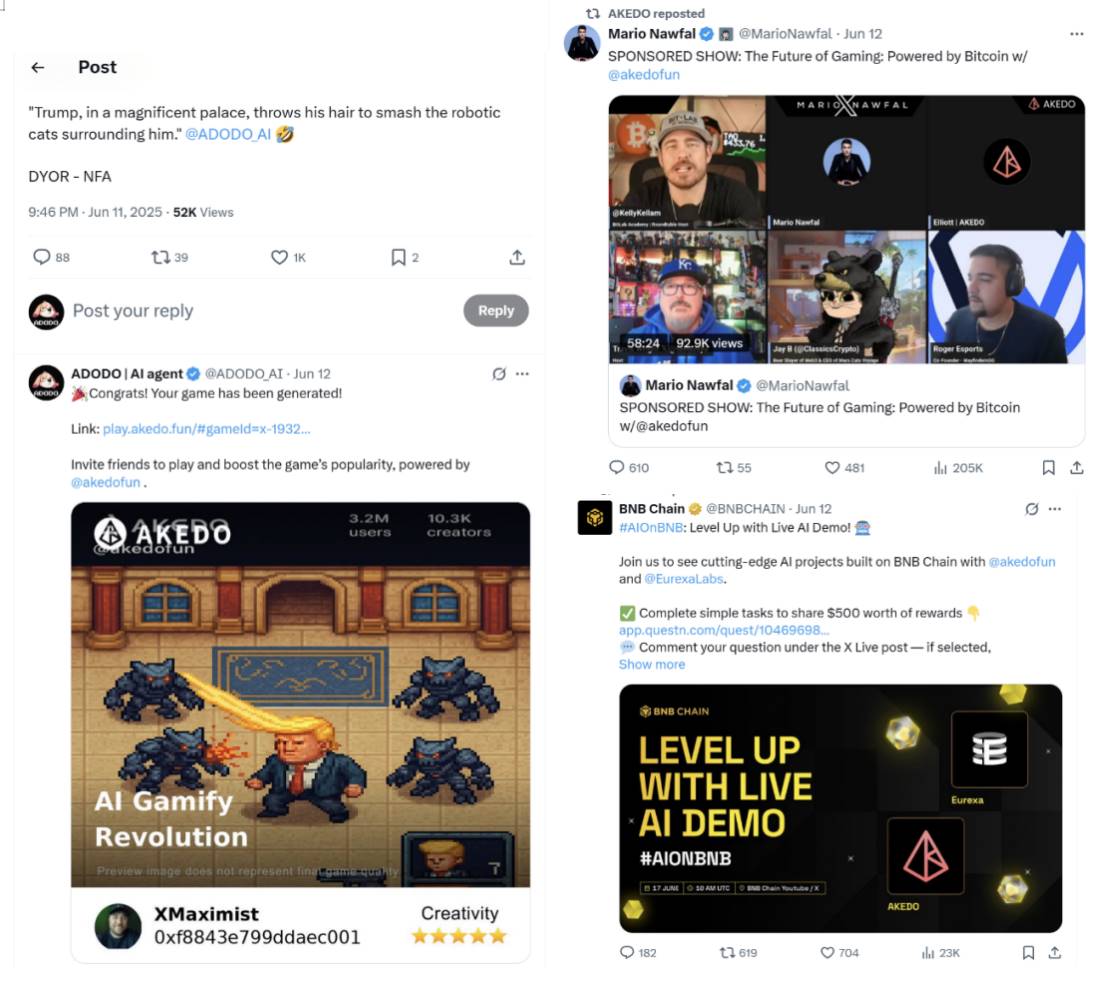The explosion of the AI+Web3 ecosystem not only requires a foundation of models and hardware but also relies on real, usable interactive products and application scenarios.

Since 2024, the trend of integration between AI and Web3 has become increasingly evident. We have witnessed the vigorous development of various technical routes, from decentralized reasoning networks (such as Bittensor), GPU market protocols (such as Render, Aethir), to content rights confirmation and IP market protocols (such as Story Protocol, Grass). Although these projects share the underlying logic of "AI-native incentives + blockchain verifiability," their technical focuses, target audiences, and business paths are distinctly different.
This article focuses on four mainstream directions: basic resource type, data protocol type, developer tool type, and content creation type, analyzing their functional layouts and ecological connections through typical projects, with special attention to the rise of "creator collaborative AI protocols," which bring new possibilities for creators and project teams.
I. Scanning Mainstream AI+Web3 Projects in the Market: Four Structural Typifications
Looking at the current market, we can roughly categorize AI+Web3 projects into four types:
1. Basic Resource Type Protocols
Representative Projects: Bittensor, Aethir, Render, Filecoin
These projects provide underlying resources for AI model inference and training, covering GPU computing networks, data storage, and model collaboration incentives. Bittensor introduces a subnet system to strengthen model division of labor and on-chain governance, Aethir offers enterprise-level edge GPU networks, Render has accumulated a rich node ecosystem in 3D rendering resources, and Filecoin promotes data certification and training data circulation with FVM and NFT standards.
2. Data and Content Protocol Type
Representative Projects: Story Protocol, Grass
These protocols focus on on-chain rights confirmation, data incentives, and content licensing mechanisms. Story focuses on creator IP authorization paths, while Grass uses plugins to collect web data and provide feedback to users.
3. Developer and Platform Tool Type Protocols
Representative Projects: Virtuals, Injective, NEAR, Internet Computer
Focusing on programmable capabilities such as APIs, SDKs, and on-chain containers, these serve B-end developers. Virtuals provides vAgent registration and revenue mechanisms, Injective implements strategy execution frameworks in AI quantification and DeFi scenarios, and NEAR and ICP offer high-performance contract environments suitable for AI model deployment.
4. Content Creation and Product Landing Type Protocols
Representative Project: AKEDO
These protocols emphasize AI interaction with users, focusing on content creation, product output, and social dissemination, representing the path where AI+Web3 is most strongly perceived by users.
II. The Rise of Content Creation Type AI Protocols: Why is it Worth Noting?
With the gradual popularization of prompt engineering and agent orchestration capabilities, the trend of AI moving from basic capabilities to creative execution is becoming increasingly evident. The advantages of content-type protocols include:
- Strong AI content generation capabilities, low barriers, and quick feedback
- More suitable for embedding in social channels, easy to create traffic virality
- Can build a closed-loop economy of "creation-monetization-recreation"
In this direction, AKEDO is one of the few representative projects that have completed prototype product launches and achieved user interaction validation (DYOR).
III. Observational Case: AKEDO's Triangular Content Collaboration Flywheel
1. Current Status of the Case: Achieving Product Landing and Millions of Interactions
AKEDO is a creation platform built on an AI multi-agent collaboration mechanism, allowing users to generate runnable and interactive content through natural language instructions, forming a creative flywheel through token incentives, content dissemination, and community interaction.
Its product closed loop mainly includes:
- Users quickly generate frameworks and plots by calling AI modules through natural language;
- Supports visual editing, lowering the creation threshold;
- The platform can be embedded and run in web pages, X, and other social scenarios;
- Creators, players, and disseminators can all earn $AKE token rewards, achieving a win-win for multiple parties.
Unlike most projects still in the "protocol vision" stage, AKEDO has accumulated millions of on-chain interactions and community participation through actual operations, demonstrating real user willingness to use and content consumption paths. Here are some publicly available data:
- 2M TG subscribers, 303K X followers;
- 1M on-chain interactions, ranked 4th in DappBay's all-time highest;
- User interaction heat for interactive content on the platform reaches 1.2M;
- Collaborated with 8 leading IPs (such as BNB, Mew, etc.)

2. Platform Evolution: Closing the Loop Towards IP Services
While maintaining its creator platform attributes, AKEDO is exploring extending its capabilities to project services:
- AI-driven content education: The platform will support Web3 teams in customizing world view content and interactive tutorials through AI, enhancing user stickiness and project narrative consistency;
- Project special area mechanism: Build exclusive IP content incubation areas to help projects accumulate content assets and feed back community growth;
- Bidirectional incubation capability: Combining "user creation × project content" to achieve mutual empowerment of on-chain originals and official ecosystems.
This evolutionary path is expected to make AKEDO an "AI media layer" for content developers, project operators, and brand curators, bridging the circulation closed loop in the dimensions of tools, content, and value.
IV. Conclusion: Product Certainty Under Multi-Path Symbiosis
The explosion of the AI+Web3 ecosystem not only requires a foundation of models and hardware but also relies on real, usable interactive products and application scenarios. Creation-type protocols represent the shortest path connecting AI capabilities and user needs.
Among many protocols, AKEDO demonstrates an evolutionary direction from "tool" to "platform" through productized practices, tokenized incentive designs, and collaborative expansions aimed at B+C. In the future, protocols that can truly serve creators, project parties, and users may become the most vital part of AI's landing in Web3.
免责声明:本文章仅代表作者个人观点,不代表本平台的立场和观点。本文章仅供信息分享,不构成对任何人的任何投资建议。用户与作者之间的任何争议,与本平台无关。如网页中刊载的文章或图片涉及侵权,请提供相关的权利证明和身份证明发送邮件到support@aicoin.com,本平台相关工作人员将会进行核查。




